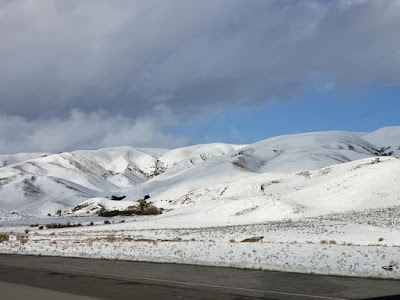And November's a wrap...
Hello to December in just days... Big Month of my 10 year Myeloma diagnosis!
CA had a crazy winter storm the last few days! Snow in areas that rarely get snow! So we took a drive today. Will be back with some really awesome pics!
Hope you had a wonderful Thanksgiving with your loved ones. We did.
I'll be back to share some super fun pictures :))
===========================
Yes my BIG 60th Bday came and went, had several wonderful surprises at home, but no BIG GIANT celebration... I'll post some pics on my next Dec post.
Thanksgiving came and went, and had a wonderful little family dinner at home... will post a pic in my next post also.
But what was the BIG beautiful news in all of this, was the incredible SNOW STORM So Cal had. So many of you reading this will be, ya ya big deal... Snow. But for So Cal, this was a Winter Wonderland experience for all of us. Not often the snow level gets down as low as it did for this storm. It was fun to experience, but also a reminder to me that I wouldn't, couldn't live in super cold weather at this time in my life.
So caregiver Chris and I loaded Jim in the car, and took a quick drive to the local mountains for a sightseeing trip. I did worry, what if the road closed, what if a storm moved in quickly, what if we got stuck somewhere as so many drivers were experiencing. Any of those would be disastrous with our medical complications... But I tossed caution out the window, and off we went. At one point the opposite side of freeway suddenly had zero cars and traffic, for miles and miles... I suspected my worst fears had come true: maybe the freeway was closed due to snow and ice! We were going to be stuck! Have you seen the news reports of freeways at a dead stop with thousands of cars going nowhere! People stuck in their cars for hours and hours! I always wonder what they do for heat or a/c or supplies or going to the bathroom! Truly one of my greatest fears since both our diagnoses!
Turned out HazMat closed the freeway for some sort of hazardous spill, and it was cleared up when we returned on that side. Thankfully, we made it to the beautiful snow covered hills and back with NO drama!
Of course before we went, I had to wait for my lower GI system to clear to be able to go on this little road trip, and couldn't eat or drink before or during the tour, but that's the price I've learned to pay for any event I want to experience. They say, get out and have fun. Just go Julie. Live Life. Be Happy. Do Things. Don't let all the medical issues limit your life. Ya Ya... few can fully understand the hindrances I have and what prevents me from doing much at all... I also think friends and family have "cancer fatigue", where they are tired of hearing of my status, side effects, how my life has changed, and how battling incurable cancer for 10 years has affected me so deeply. I think I'll write a pity party on that, next blog :))
In the meantime, enjoy these beautiful snow drive pictures!
Lucky us, beautiful drive accomplished












No comments:
Post a Comment